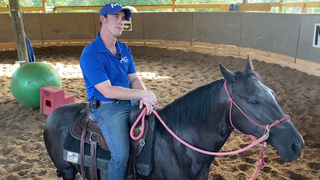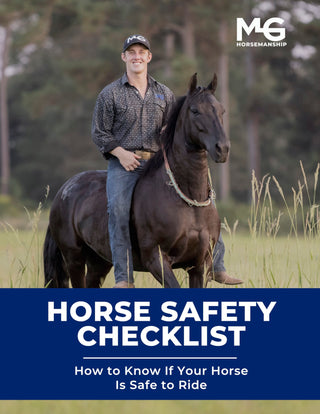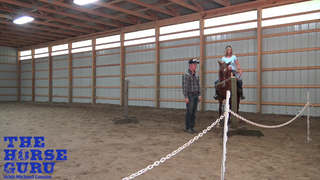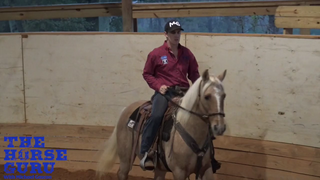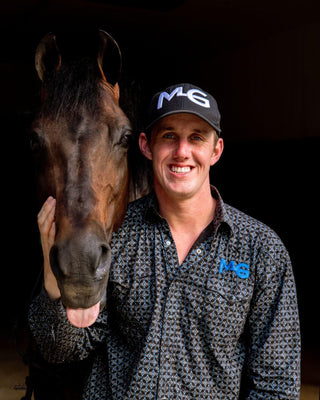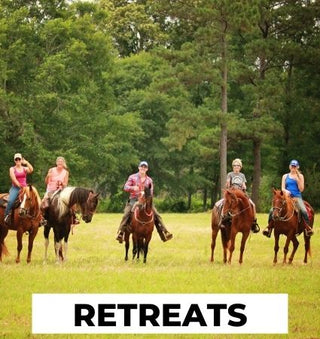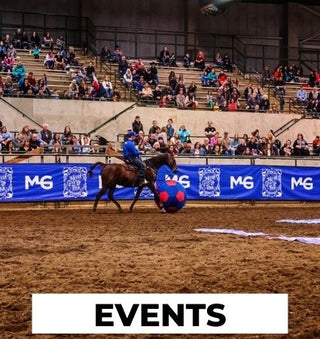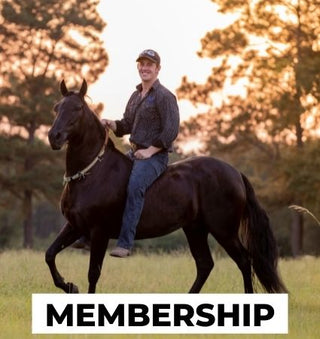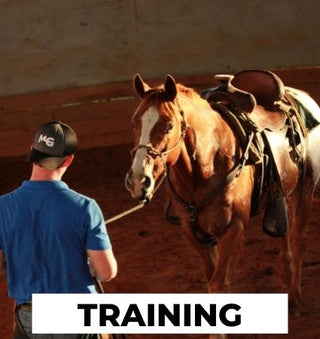Watch the Video Here or continue reading below!
Eighth grade in Michael Gascon’s training program focuses on disengaging the hindquarters under saddle. This exercise isn't just about fancy movements—it's about taking away the horse’s ability to bolt, buck, or rear by crossing over the hind legs, which effectively neutralizes the horse’s power.
Gascon calls it “the holy grail” of showing a horse, “Buddy, you can't take me for a ride.” Everything in groundwork builds to this—controlling the engine (hindquarters) so your horse responds regardless of distractions or emotions.
Why Control the Hindquarters?
Subtitle: Mobility Is Their Superpower—Take It Away
A horse’s power to flee or resist comes from the hind end. Disengaging the hindquarters removes that option and gives you ultimate control. Whether your horse is scared, angry, or distracted, if you can control the face and the hindquarters, you can redirect the energy safely.
Every time you cross the horse’s back feet, you’re “taking the motor away.” That stops dangerous behavior—bucking, bolting, rearing—before it starts.
How to Disengage the Hindquarters Correctly
Subtitle: Use the Rein First—Legs Come Later
A common mistake riders make is relying too much on their legs. Michael emphasizes the importance of the manual override. He says:
“I want to grab the horse by the face, bring his face toward his butt, and his butt wants to move.”
While leg cues come later, at this stage, it's about using the reins to clearly communicate. If your horse can disengage with a simple rein cue, you're building a reliable response that works under pressure.
Groundwork vs. Under Saddle: What's the Difference?
Subtitle: From First Grade to Eighth—A Pattern That Prepares for Anything
A student asked: What’s the difference between eighth-grade disengaging and first-grade square dancing? Michael explains:
-
First Grade (Groundwork): Disengaging the hindquarters and moving the shoulders—on the ground.
-
Eighth Grade (Riding): Disengaging only the hindquarters—under saddle.
The training structure follows a pattern: teach it on the ground, then under saddle, and finally under pressure. That’s how Gascon creates trail-ready horses that don’t lose control in chaotic or unpredictable situations.
Handling Trail Obstacles and Fear
Subtitle: Disengage, Then Re-Engage with Confidence
Q: If my horse stops and refuses to go forward, should I disengage or turn around?
Michael recommends facing the obstacle and disengaging the hindquarters every time the horse tries to retreat or panic. He says:
“The horse can’t bolt, buck, or rear if he can’t use his butt.”
That’s why you should practice disengaging in low-pressure situations—so that when you hit a narrow trail or scary moment, you have tools that already work.
Dismounting in Scary Situations: Good or Bad Habit?
Subtitle: Don’t Train to Fail Safely—Train to Ride Confidently
Q: If I get off and lead my horse past something scary, am I teaching a bad habit?
Gascon’s answer is blunt: “You’re not doing yourself any favors.” If you constantly have to dismount to handle situations, your horse isn’t truly trained. Instead, recreate those scenarios in a safe environment at home and work through them in the saddle.
Can You Re-Train a Horse That Runs Through the Bit?
Subtitle: From Bit to Bitless, with Respect and Persistence
Q: How do I go from a horse that ran through the bit to one that rides calmly in a halter?
Michael suggests going back to basics with groundwork. Use a halter to teach softness and responsiveness by “setting off and pulling around.” Don’t get into a tug-of-war—use friction and patience to build respect. Many horses that blow through bits end up riding beautifully in a halter at Gascon clinics.
What If My Horse Moves Both Ends When Disengaging?
Subtitle: Pick Up the Head Higher to Limit Movement
If your horse disengages but also moves its front end, it’s likely you’re not lifting the rein high enough. Michael explains:
“Pick up the horse’s head higher until it physically can’t move the front end.”
This isolates the hindquarters and teaches the horse to truly give up the power from the rear. It’s a game-changer for handling nervous or defiant horses.
Handling “Stonewall Jackson” Behavior
Subtitle: When Horses Freeze or Back Up Instead of Moving
Q: My horse freezes or walks backward when she doesn't want to work. How do I fix it?
Michael warns against pushing a stuck horse straight forward. Instead, bend the horse and move its hindquarters. That gets the brain working and dissipates pressure. “The most stubborn mare will look for forward as the release,” he says.
Final Thoughts: Building a Reliable Horse Starts Here
Subtitle: Eighth Grade Is More Than a Maneuver—It’s a Mindset
Disengaging the hindquarters is not just a technique. It's a mindset shift—for both horse and rider. You’re teaching the horse that it can’t escape responsibility, and you’re training yourself to handle scary situations with calm, confident control.
“Walk softly and carry a big stick,” Michael says. “The stick is your ability to control the hindquarters.”


